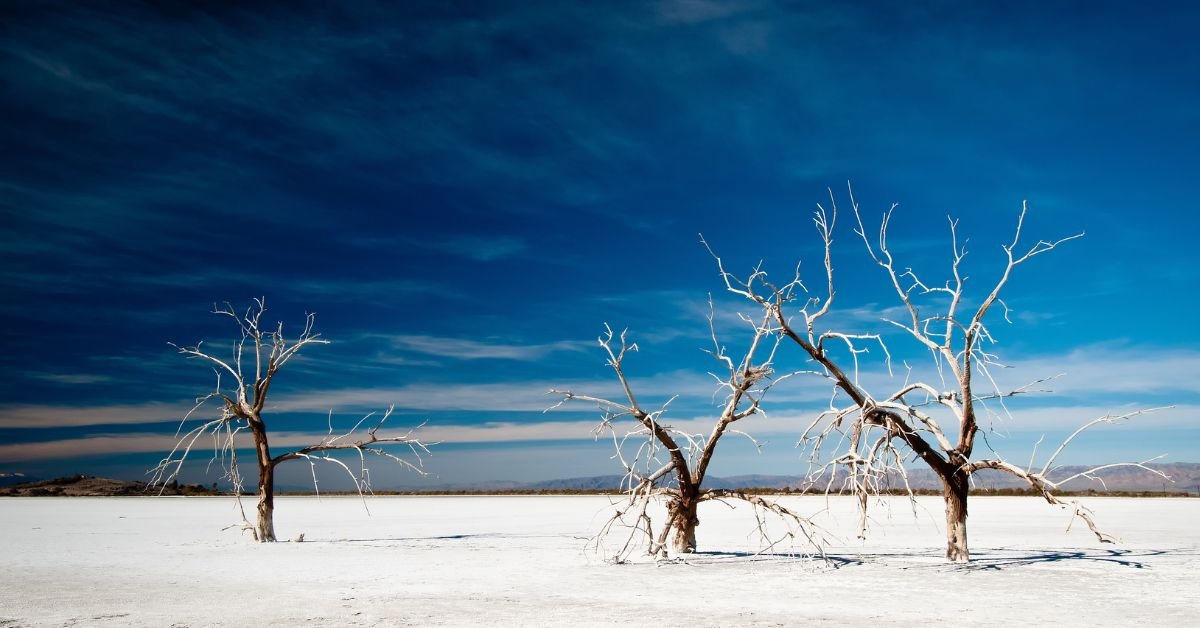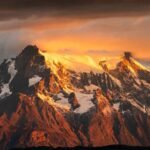Deserts aren’t always hot In fact, the defining feature of a desert is low precipitation, not high temperature. Some deserts, like the Gobi or the Atacama, can get extremely cold at night. When the right conditions align cold air, moisture, and a drop in temperature—snow can fall, even in the most unlikely places.
The Role of Altitude and Latitude
Not all deserts are created equal. The Sahara, for example, has mountain ranges like the Atlas Mountains, where snow is more common. Higher altitudes mean colder temperatures, making snow possible even in Africa.
Snow in Africa: Fact or Fiction?
Africa Snow: More Common Than You Think
When people hear about snow in Africa, they’re often shocked. But Africa is a vast continent with diverse climates. The Atlas Mountains in Morocco and Algeria regularly see snow in winter. Even Mount Kilimanjaro, near the equator, is famous for its snow-capped peak.
The Sahara’s Rare Snowfalls
The real headline-grabber is snow in the Sahara Desert. While extremely rare, it’s not unheard of. In recent years, towns like Ain Sefra in Algeria have seen snow dusting the dunes, creating breathtaking scenes that go viral worldwide.
Desert of Snow: When the Impossible Happens
What Does a Desert of Snow Look Like?
Imagine endless waves of sand, suddenly covered in a layer of white. The contrast is surreal—orange dunes topped with snow, camels trudging through icy drifts. These moments are fleeting, but they leave a lasting impression.
Real-Life Example: The 2018 Sahara Snowfall
In January 2018, Ain Sefra experienced a heavy snowfall that lasted for hours. Locals and tourists alike rushed to capture the moment. One resident said, “I’ve lived here my whole life and never seen anything like it. The kids were making snowmen on the sand!”
Did It Snow in Saudi Arabia? The Middle East’s Winter Wonders
Snow in the Arabian Desert
It’s not just Africa that gets in on the action. The Arabian Peninsula, including Saudi Arabia, has seen its own share of snow surprises. In recent years, regions like Tabuk have experienced snowstorms, turning the desert into a winter wonderland.
Why Does This Happen?
Cold air masses from Europe or Central Asia can sweep down into the Middle East, bringing freezing temperatures and, occasionally, snow. These events are rare but not impossible, especially in higher elevations.
The Global Fascination with Snow in Desert
Why Do We Care So Much?
There’s a universal appeal to the unexpected. Snow in desert settings makes us question what we know about the world. It’s a reminder that nature is full of surprises—and that climate is more complex than we often realize.
Social Media’s Role
Every time snow falls in a desert, social media lights up. Photos and videos go viral, sparking debates, awe, and sometimes even skepticism. People ask: Is this climate change? Is it a sign of something bigger?
The Science of Desert Climates
What Defines a Desert?
A desert is defined by its lack of precipitation—less than 250mm (10 inches) per year. This means deserts can be hot (like the Sahara) or cold (like Antarctica, which is technically the world’s largest desert).
Temperature Swings
Deserts are known for extreme temperature swings. It can be scorching hot during the day and freezing cold at night. These rapid changes make snow possible under the right conditions.
Africa Snow: Beyond the Sahara
Snow in South Africa
It’s not just North Africa that sees snow. South Africa’s Drakensberg Mountains and Lesotho’s highlands get regular snowfall in winter. These regions even attract tourists looking for a unique African ski experience.
Mount Kenya and Kilimanjaro
Both of these iconic peaks are known for their snow and glaciers, despite being near the equator. Their high altitudes mean temperatures are low enough for snow year-round.
Desert of Snow: The Impact on Local Life
How Do Locals React?
For many desert dwellers, snow is a novelty. Children play, adults marvel, and everyone takes photos. But snow can also disrupt daily life—roads become impassable, livestock struggle, and infrastructure isn’t built for icy conditions.
Pros and Cons
Pros:
- Boosts tourism and local business
- Creates unforgettable memories
- Raises global awareness of climate diversity
Cons:
- Can damage crops and livestock
- Disrupts transportation
- May signal unusual weather patterns

Did It Snow in Saudi Arabia? A Closer Look
Recent Snow Events
In 2022 and 2023, parts of northern Saudi Arabia saw significant snowfall. Videos of camels standing in snowdrifts made headlines around the world. Locals bundled up in winter coats, and some even tried skiing on the dunes!
The Science Behind It
Meteorologists explain that these events are caused by rare but powerful cold fronts. When moist air meets freezing temperatures, snow can fall—even in the heart of the desert.
The Role of Climate Change
Is Snow in Desert a Sign of Global Warming?
Some experts argue that unusual weather events, like snow in Africa or the Middle East, could be linked to climate change. Shifting weather patterns, increased volatility, and changing jet streams all play a role.
The Debate
Others caution against reading too much into isolated events. While snow in desert regions is rare, it has happened before. The key is to look at long-term trends, not just one-off occurrences.
Real-Life Reactions: Voices from the Desert
A user posted online: “Seeing snow in the desert was like living in a dream. My kids had never seen snow before, and now they’ve built their first snowman—on a sand dune!”
These moments create lifelong memories and remind us of nature’s unpredictability.
The Beauty and Risks of a Desert of Snow
Stunning Visuals
Photographers and travelers flock to capture the rare sight of snow in desert landscapes. The contrast of colors—white snow on red or golden sand—is breathtaking.
Risks and Challenges
But snow can also bring challenges. Desert infrastructure isn’t built for ice and snow, leading to accidents and disruptions. Livestock and crops can suffer, and local economies may take a hit.
Features and Usability: Experiencing Snow in Desert in 2025
Virtual Tours and Social Media
In 2025, technology lets us experience snow in desert regions like never before. Virtual reality tours, live webcams, and social media updates bring these rare events to a global audience in real time.
Travel Opportunities
Tour operators now offer “snow in the desert” experiences, taking advantage of the growing interest. These trips are popular with adventure seekers and photographers.
The Future: Will Snow in Desert Become More Common?
What the Experts Say
Climate scientists are divided. Some predict that as weather patterns shift, we may see more extreme events—including snow in unexpected places. Others say these are still rare occurrences, unlikely to become the norm.
What to Watch For
Keep an eye on global weather reports, especially during winter months. If you’re lucky, you might just catch the next viral moment of snow in Africa or the Middle East.
FAQs
Q. How often does it snow in the Sahara Desert?
A. Snow in the Sahara is extremely rare, occurring only a handful of times in the past century. Most events happen in higher elevations, like the Atlas Mountains or towns like Ain Sefra.
Q. Did it snow in Saudi Arabia recently?
A. Yes, northern Saudi Arabia has seen snow in recent years, especially in regions like Tabuk. These events are rare but have become more frequent in the past decade.
Q. Where else in Africa does it snow?
A. Besides the Sahara, snow is common in the Atlas Mountains, Mount Kilimanjaro, Mount Kenya, and the Drakensberg Mountains in South Africa and Lesotho.
Q. What causes snow in desert regions?
A. Snow in desert regions is caused by a combination of cold air, moisture, and low temperatures often due to unusual weather patterns or cold fronts.
Final Thoughts
The next time you see a photo of snow in Africa or a desert of snow in Saudi Arabia, remember: nature is full of surprises. These rare events remind us that the world is more complex and more beautiful than we often realize.
CLICK HERE FOR MORE BLOG POSTS
There’s a certain weight in the words John Authers writes—not just because of what he knows, but how he shares it. His voice doesn’t just echo facts; it builds meaning. In a world overwhelmed by rushed opinions and robotic summaries, John’s writing feels… different. It feels lived-in, thoughtful, and deeply human.
Readers don’t turn to John for headlines—they come for context. They come for that rare blend of clarity, insight, and emotional depth that turns financial journalism into something closer to storytelling. His reflections on markets, geopolitics, or human behavior aren’t just readable—they’re relatable.
What sets John apart isn’t just his experience (though he has plenty of it). It’s his ability to pause, reflect, and explain the why behind the what. He writes like someone who’s been in the room where it happens—but never forgets the reader who hasn’t.
In 2025, when AI churns out articles in milliseconds, John Authers still writes like a human—and that, more than anything, is what makes his work worth reading.











